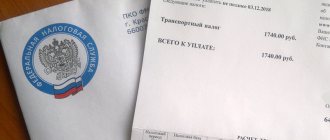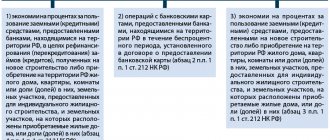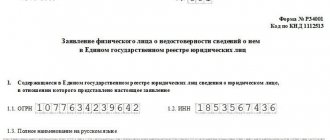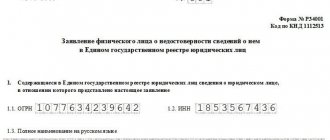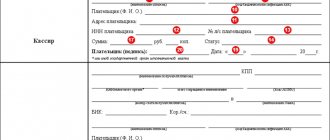From mid-2022, organizations and individual entrepreneurs will be able to transfer a single tax payment to the budget. This is not a new type of tax, but a special procedure for paying existing taxes, fees, contributions, penalties, and fines.
So far, the EPP is being introduced as a voluntary experiment, but there is already a bill that will approve this procedure as the only option for business settlements with the budget.
Free tax consultation
What is the essence of a single tax payment?
The single tax payment for businesses is similar to the already existing single tax payment for individuals. The bottom line is that the taxpayer transfers a certain amount to a single account in the Federal Treasury, which the Federal Tax Service will then independently distribute.
The EPP is credited to the performance of obligations to the budget in the following order:
- arrears;
- tax within the chosen taxation system, advance payments, fees, insurance premiums;
- fines;
- interest;
- fines.
If there are not enough funds to offset all obligatory payments, then they are credited in proportion to the obligations.
How obligations are formed under the EPP
The amount transferred by a single tax payment is distributed not just like that, but on the basis of declarations and calculations submitted by an organization or individual entrepreneur. In addition, it will be necessary to send a special notification to the Federal Tax Service about the calculated amounts of payments to the budget.
Notification deadlines:
- for advance tax payments, taxes, insurance contributions - no later than five days before the deadline for their payment;
- for personal income tax for tax agents - no later than the 5th day of the month following the month of payment of the individual’s income.
Thus, the EPP does not relieve businesses of the responsibility for tax accounting and independent calculation of taxes and other payments. The new procedure only simplifies the distribution of transferred money into the appropriate types of payments.
After the tax inspectorate makes a decision to credit the ETP against any payment, the organization or entrepreneur will be notified of this within five days.
If it turns out that an excess amount was transferred as EPP, it can be returned or left in the account for future payments. However, a third party will not be able to use this right if they transferred money for a businessman.
Let's consider the features of payment and offset of the single tax payment of individuals
In general, a single tax payment of an individual is transferred
to the budget system of the Russian Federation
at the place of residence of the individual
or at the place of stay, if there is no place of residence in Russia. If an individual does not have both, the payment is transferred to the location of one of the real estate objects owned by such person.
The amount of a single tax payment of an individual is offset by the tax authority independently against upcoming current payments or towards the payment of arrears on the specified taxes and (or) arrears on the corresponding penalties. Moreover, it is important to note here that the offset is carried out
against upcoming payments
sequentially starting with a lower
tax amount. In the absence of tax arrears, offset is carried out sequentially starting with the debt on penalties with a smaller amount, and in the absence of arrears on penalties - starting with the debt on interest with a smaller amount.
Based on the results of the offset, the tax authority informs the taxpayer (individual) about the decision made - about the offset of the amount of the single tax payment of an individual - within five days from the date of the due date for payment of the relevant taxes.
Since 2022, changes have been made to Article 45.1 of the Tax Code of the Russian Federation. President Vladimir Putin signed a Federal Law supplementing the provisions of the Tax Code of the Russian Federation with Article 45.1, in particular, the list of taxes taken into account in the single tax payment is supplemented with personal income tax, payable if the tax agent provides information about the impossibility of withholding personal income tax.
Pros and cons of the EPP
The initiator of the introduction of a single tax payment is the Federal Tax Service. The Tax Service believes that the new taxation procedure will be in demand for the following reasons.
- Elimination of errors when filling out payment orders, for example, incorrect KBK. According to the head of the Federal Tax Service, Daniil Egorov, the number of these errors now reaches 30 million per year.
- Simplification of settlements with the budget: to transfer a single tax payment, you only need to indicate the taxpayer’s TIN.
- Settlement of arrears and overpayments without additional statements and penalties.
- Reducing the load on government information systems.
Of course, if we talk only about the interests of the budget, then it is so. But for individual entrepreneurs and legal entities, the advantages of a single tax payment are less obvious.
- Additional reporting is introduced - notification of calculated amounts due for payment. And since there will be many types of payments under the EPP, more than one notification will be required.
- Currently, to make advance payments under the simplified tax system, you do not need to prepare any reports. In this case, it is unclear on what basis it is necessary to fill out a notification of calculated advances for the EPP. In addition, when calculating advances, the taxpayer independently deducts insurance premiums and sales tax. It is not clear how these amounts will be offset for simplifiers with a single tax payment. Another change in declarations may be required.
- If an organization or individual entrepreneur has arrears that they do not agree with or dispute in court, then when transferring a single tax payment they will still be written off, and in the first place.
- We can expect an increase in disputes regarding the offset of various types of payments, including due to errors by employees of the Federal Tax Service.
These disadvantages of the EPP are unlikely to outweigh the promised ease of transferring payments to the budget. After all, if it’s just a matter of filling out payments, then almost no one does it manually; special services and programs are used everywhere that process everything automatically.
From 2022, it will be possible to pay personal income tax through a single tax payment
From 2022, amendments to Article 45.1 of the Tax Code of the Russian Federation will come into force, which allow the payment of personal income tax through a single tax payment. The relevant norms are contained in Federal Law No. 325-FZ of September 29, 2019, published on the Official Internet Portal of Legal Information.
Let us remind you that starting from 2022, a new article 45.1 “Single tax payment of an individual” has appeared in the Tax Code of the Russian Federation. Such payments include funds voluntarily transferred by individuals to the budget to the appropriate account of the Federal Treasury in payment of property taxes (transport tax, land tax and property tax). The tax authority at the place of registration of the taxpayer can independently distribute and offset the funds received towards the payment of property taxes for the taxpayer. At the same time, according to the rules in force to date, a single tax payment cannot be used to pay personal income tax.
The new amendments establish the possibility of sending a single tax payment, including for personal income tax, which is indicated in tax notices. In this case, we are talking about situations where personal income tax was not withheld by the tax agent and the tax must be paid by the taxpayer himself according to a tax notice received from the tax authorities (clause 6 of Article 228 of the Tax Code of the Russian Federation).
Also, this law amends Article 21 of the Tax Code of the Russian Federation, which allows individuals to submit documents (information) to the tax authorities and receive documents from the tax authorities through multifunctional centers (MFCs).
BUKHPROSVET
According to the current rules, a single payment is made in one payment to pay one or several taxes at once. Payment of a single tax payment can be made for the taxpayer by any other person. But a third party who is not a payer will not be able to demand a refund of the individual’s single tax payment in the future.
The offset of the single payment is carried out by the Federal Tax Service independently at the time of payment of property taxes. Money is credited sequentially, starting with the lowest tax amount. The tax office is obliged to inform the individual about the offset of the amount of the single payment within five days from the date of the due date for payment of the relevant taxes.
The amount of the single payment not counted by the tax authorities is returned to the individual. To return the money, you will need to write a corresponding application. The application is submitted in the form approved by order of the Federal Tax Service of the Russian Federation dated December 14, 2018 No. ММВ-7-8/ [email protected] (Appendix No. 2).
Refunds within the limits of their balance are carried out within one month from the date of receipt of the application from the individual. If this deadline is violated, interest is accrued and must be paid to the individual for each calendar day of violation of the return period.
How to take part in the EPP experiment
Let us remind you that for now, a single tax payment for business is voluntary. The experiment is carried out from July 1 to December 31, 2022.
Those wishing to participate in the pilot project must submit an application to their Federal Tax Service during April 2022, the form of which will still be developed. Moreover, the application is submitted no later than one month after reconciliation of calculations for taxes, fees, insurance premiums, penalties, fines, and interest.
For example, if you reconciled your accounts on March 15, 2022, then you must submit an application for payment of the unified tax no later than April 15, 2022.
Regulatory framework for the EPP
So far, the single tax payment is regulated only by the new Article 45.2 of the Tax Code of the Russian Federation, which came into force on January 1, 2022 by Law No. 379-FZ dated November 29, 2021. The article is quite short and it provides for a voluntary transition to the EPP.
In order for the new procedure to work, the Federal Tax Service must develop notification forms for calculated payments and other necessary documents. In addition, we also need special regulations for the interaction of the tax service with organizations and individual entrepreneurs that will take part in the experiment. Most likely, taxpayers will need to use their personal account on the Federal Tax Service website, because Article 45.2 of the Tax Code of the Russian Federation has already established that an application for payment of the unified tax can only be submitted through the TCS.
But legislators have already prepared a much more voluminous bill 46702-8, which requires a single tax payment for businesses from 2023.
This bill introduces two additional concepts:
- a single tax account in which funds are accumulated for transfer to the budget;
- the total obligation to pay taxes, advance payments, fees, insurance premiums, penalties, fines, interest.
The single tax account will determine the balance, that is, the difference between the available funds and the amount of obligations to the budget. The balance can be positive, negative or zero, which will facilitate control over taxpayers.
And most importantly, the bill provides for the postponement of deadlines for submitting declarations and paying most taxes to earlier dates. And this will certainly have a negative impact on business.
Movement in trend
It must be understood that, in addition to convenience for taxpayers, the motive for introducing a single tax payment is also the desire to increase the transparency of tax legal relations: administering one payment is much easier than many. However, it is unlikely that the new procedure will lead to an increase in the number of detected tax offenses, because there is no talk of abolishing tax reporting, which means that the previous methods of tax evasion, consisting of falsifying reporting and other documents submitted to the Federal Tax Service, will remain unchanged.
In addition, tax authorities’ software products now allow them to monitor and identify unscrupulous taxpayers who were previously ignored. For example, inspectors can monitor VAT reporting indicators and exchange information with other departments of the Federal Tax Service, and banks participating in the tax control system control all types of calculations, that is, inspectors can track payments online.
Considering that there is more and more digital control by the state, and this trend certainly will not stop, the single tax payment system looks like nothing more than a logical addition to the innovations already introduced. We can only hope that the technical implementation of the new mechanism will not add headaches to taxpayers.
The editors' opinion may not coincide with the author's point of view




